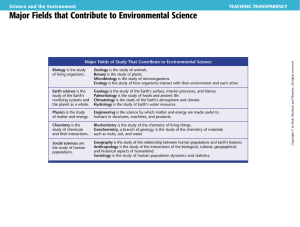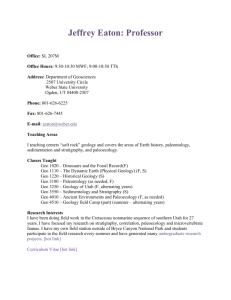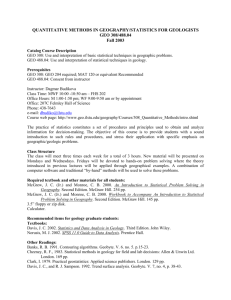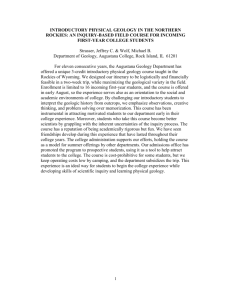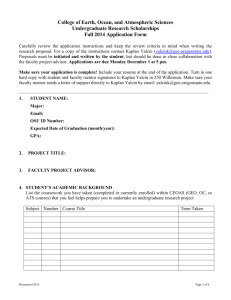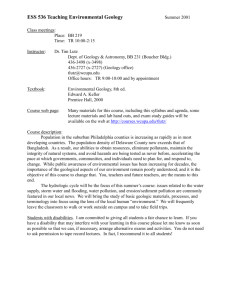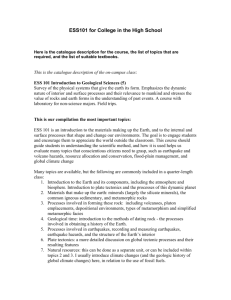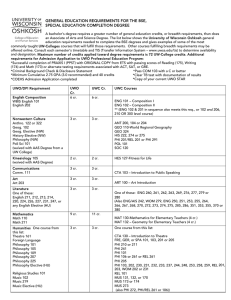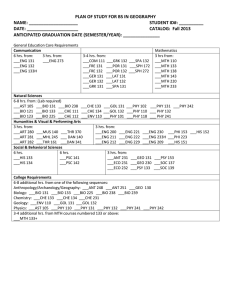Link here for a printable list of the Science Course Requirements
advertisement
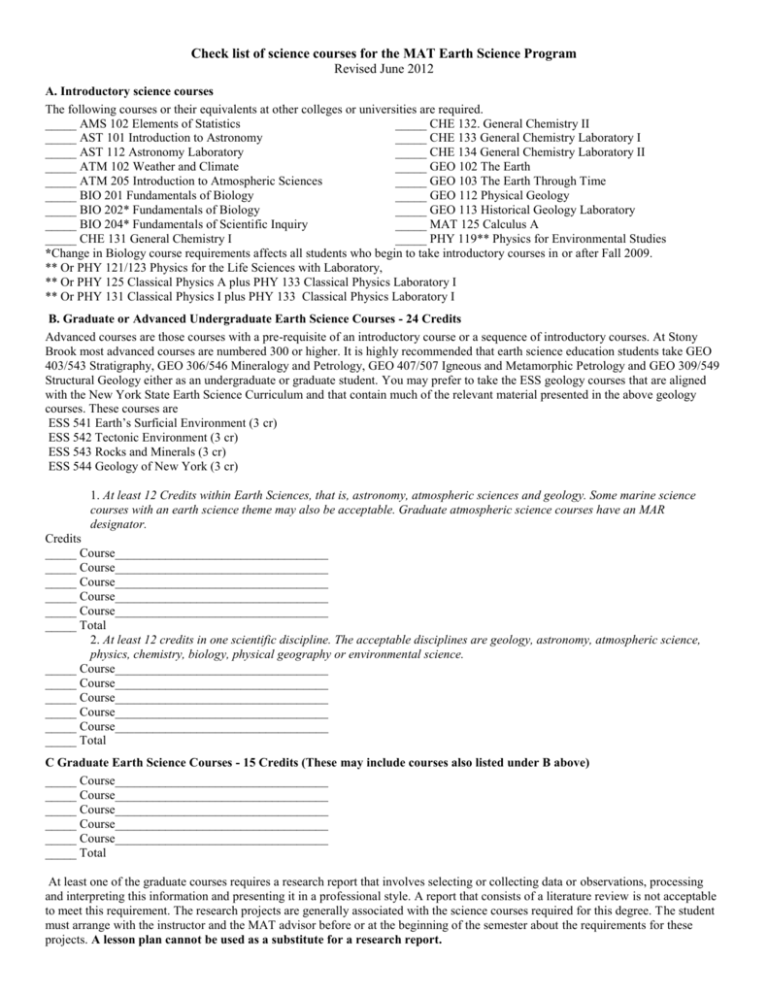
Check list of science courses for the MAT Earth Science Program Revised June 2012 A. Introductory science courses The following courses or their equivalents at other colleges or universities are required. _____ AMS 102 Elements of Statistics _____ CHE 132. General Chemistry II _____ AST 101 Introduction to Astronomy _____ CHE 133 General Chemistry Laboratory I _____ AST 112 Astronomy Laboratory _____ CHE 134 General Chemistry Laboratory II _____ ATM 102 Weather and Climate _____ GEO 102 The Earth _____ ATM 205 Introduction to Atmospheric Sciences _____ GEO 103 The Earth Through Time _____ BIO 201 Fundamentals of Biology _____ GEO 112 Physical Geology _____ BIO 202* Fundamentals of Biology _____ GEO 113 Historical Geology Laboratory _____ BIO 204* Fundamentals of Scientific Inquiry _____ MAT 125 Calculus A _____ CHE 131 General Chemistry I _____ PHY 119** Physics for Environmental Studies *Change in Biology course requirements affects all students who begin to take introductory courses in or after Fall 2009. ** Or PHY 121/123 Physics for the Life Sciences with Laboratory, ** Or PHY 125 Classical Physics A plus PHY 133 Classical Physics Laboratory I ** Or PHY 131 Classical Physics I plus PHY 133 Classical Physics Laboratory I B. Graduate or Advanced Undergraduate Earth Science Courses - 24 Credits Advanced courses are those courses with a pre-requisite of an introductory course or a sequence of introductory courses. At Stony Brook most advanced courses are numbered 300 or higher. It is highly recommended that earth science education students take GEO 403/543 Stratigraphy, GEO 306/546 Mineralogy and Petrology, GEO 407/507 Igneous and Metamorphic Petrology and GEO 309/549 Structural Geology either as an undergraduate or graduate student. You may prefer to take the ESS geology courses that are aligned with the New York State Earth Science Curriculum and that contain much of the relevant material presented in the above geology courses. These courses are ESS 541 Earth’s Surficial Environment (3 cr) ESS 542 Tectonic Environment (3 cr) ESS 543 Rocks and Minerals (3 cr) ESS 544 Geology of New York (3 cr) 1. At least 12 Credits within Earth Sciences, that is, astronomy, atmospheric sciences and geology. Some marine science courses with an earth science theme may also be acceptable. Graduate atmospheric science courses have an MAR designator. Credits _____ Course__________________________________ _____ Course__________________________________ _____ Course__________________________________ _____ Course__________________________________ _____ Course__________________________________ _____ Total 2. At least 12 credits in one scientific discipline. The acceptable disciplines are geology, astronomy, atmospheric science, physics, chemistry, biology, physical geography or environmental science. _____ Course__________________________________ _____ Course__________________________________ _____ Course__________________________________ _____ Course__________________________________ _____ Course__________________________________ _____ Total C Graduate Earth Science Courses - 15 Credits (These may include courses also listed under B above) _____ Course__________________________________ _____ Course__________________________________ _____ Course__________________________________ _____ Course__________________________________ _____ Course__________________________________ _____ Total At least one of the graduate courses requires a research report that involves selecting or collecting data or observations, processing and interpreting this information and presenting it in a professional style. A report that consists of a literature review is not acceptable to meet this requirement. The research projects are generally associated with the science courses required for this degree. The student must arrange with the instructor and the MAT advisor before or at the beginning of the semester about the requirements for these projects. A lesson plan cannot be used as a substitute for a research report.

